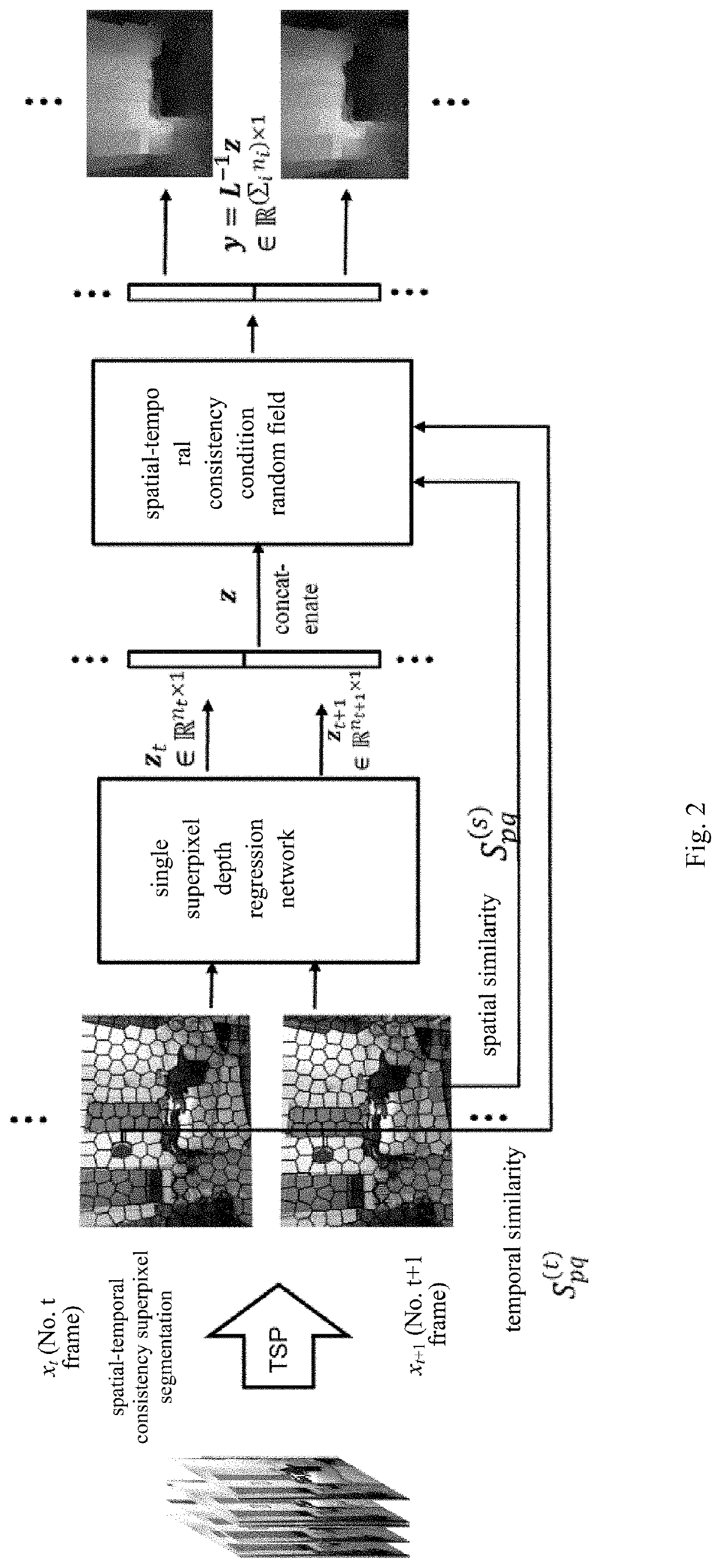Method for generating spatial-temporally consistent depth map sequences based on convolution neural networks
a convolution neural network and depth map technology, applied in the field of stereoscopic videos, can solve the problems of high cost, high cost of video post-processing, and the inability to directly shoot by the 3d camera, so as to improve the time-domain continuity of depth map recovery, and improve the accuracy of depth estimation
- Summary
- Abstract
- Description
- Claims
- Application Information
AI Technical Summary
Benefits of technology
Problems solved by technology
Method used
Image
Examples
Embodiment Construction
[0064]Referring to the drawings, the present invention will be further illustrated.
[0065]Referring to FIG. 1, a flow chart according to an embodiment of the present invention, a method of the present invention comprises steps of:
[0066]1) collecting a training set, wherein each training sample of the training set comprises a continuous RGB (red, green, blue) image sequence with m frames, and a corresponding depth map sequence;
[0067]2) using the method presented in Chang Jason et al. A video representation using temporal superpixels. CVPR 2013 to process each image sequence in the training set with spatial-temporal consistency superpixel segmentation, and establishing a spatial similarity matrix S(s) and a temporal similarity matrix S(t);
[0068]3) 3) building the convolution neural network structure, wherein the convolution neural network comprises a single superpixel depth regression network with a parameter W, and a spatial-temporal consistency condition random field loss layer with ...
PUM
 Login to View More
Login to View More Abstract
Description
Claims
Application Information
 Login to View More
Login to View More - R&D
- Intellectual Property
- Life Sciences
- Materials
- Tech Scout
- Unparalleled Data Quality
- Higher Quality Content
- 60% Fewer Hallucinations
Browse by: Latest US Patents, China's latest patents, Technical Efficacy Thesaurus, Application Domain, Technology Topic, Popular Technical Reports.
© 2025 PatSnap. All rights reserved.Legal|Privacy policy|Modern Slavery Act Transparency Statement|Sitemap|About US| Contact US: help@patsnap.com



